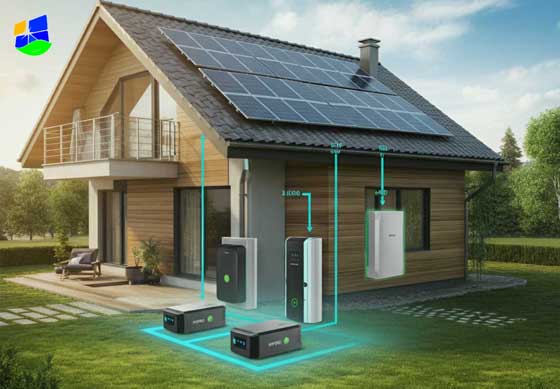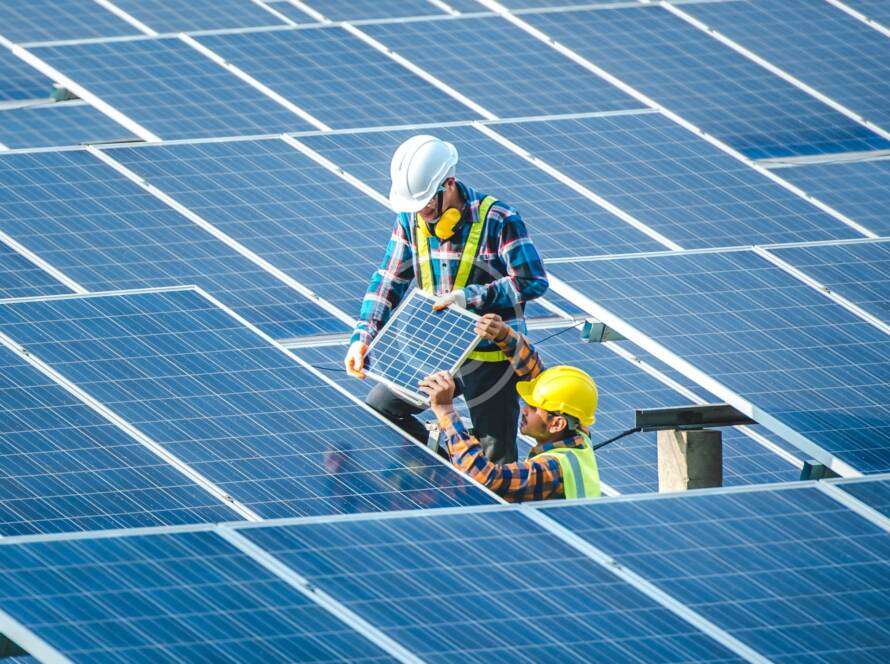The merger of solar power with smart technology has appealed to environment-friendly homeowners as well as technology enthusiasts. The improvement of smart home devices and solar power systems has made it feasible to bring down energy costs while enjoying easier and more automated living. Integrating a solar smart system within your house means you are not merely producing clean energy; rather, you have access to a control system that is more sophisticated.
Are you interested in how it all functions together? This blog uncovers the most important elements of smart solar power systems and how they can turn your residence into an environmentally friendly and technologically advanced one
Modern Smart Homes and their Use of Solar Energy
Solar energy systems have advanced significantly. It is no longer sufficient to merely install a couple of panels on the roof of your home and hope that the sun will do its work. Today’s smart solar systems are very different to standard systems and are designed to improve efficiency, management, and most importantly, energy production.
Inverter: A New Era Device Solar Systems Need One of the Most Important Components of a Smart Solar System.
A smart solar system features a central inverter. This component is one of the most vital parts of solar energy systems that converts direct current (DC) to alternating current (AC) electricity. Every smart solar power system employs a centralized inverter, also known as a micro inverter, which serves as the brain of the operation
A smart solar system features a central inverter. This component is one of the most vital parts of solar energy systems that converts direct current (DC) to alternating current (AC) electricity. Every smart solar power system employs a centralized inverter, also known as a micro inverter, which serves as the brain of the operation
Conventional inverters were simply appliances that transformed the direct current (DC) electricity stemming from the solar panels into alternating current (AC) electricity for use in your house. However, modern inverters now come with miniature computers that significantly increase their capabilities

Resolution of Various Issues
Monitoring: They include real time monitoring systems that allow you to see how much energy you are using as well as how much is being produced. With a glance at your cell phone, you can see how much energy your solar panels are producing and how well your home is consuming it.
Advanced Fault Detection: These systems can notify you of a suspicious issue before it becomes a major problem. They are proactive as rather than only waiting to fix the issue, they look for the possibility of problems occurring.
Efficient Energy Exporting: If you end up using less power than you produce, your inverter swiftly allows you to send excess energy back to the grid or store it in batteries, all to maximize your savings.
Optimization of Individual Panels
The performance of traditional solar panel systems is often interconnected, also called a string system, which poses one of the most common problems. If one solar panel is performing poorly, be it due to being shaded, the entire array performance reduces.
Power optimizers are used in smart systems to eradicate this inefficiency.
These little devices are put in each solar panel, permitting them to work separately from each other. The result?
Your entire solar panel system achieves its maximum potential, because each component acts independently of the rest.
Your output is maximized even with non-ideal conditions such as overcast days or shading.
Power optimizers work closely with grid inverters too. They enhance the energization and management processes by supplying accurate information to the central inverter.

why mix solar with smart home technology?
What is the benefit of having solar panels and integrating them into your bigger smart ecosystem? Simple, smart solar is not only energy efficient, it improves the quality of life.
Effortless Energy Integration
Connecting your smart home devices to your solar energy system allows for customized energy use per your daily working routine. For instance:
Schedule your system to charge your electric vehicle wherever the solar panels generate the most power.
Set smart thermostats to effectively warm or cool the house in accordance with the energy produced.
Set washing machines and dishwashers to run on peak solar hours.
These innovations are not only energy effective but also lessen the impact of the household on the environment.
Micro-solar battery enables you to operate off grid.
Combining solar energy and smart battery systems offers sufficient storage of excess energy to be used during the night or cloudy days.
This enables you to become more self-reliant while still providing power for basic functions in your house during blackouts.
These batteries can also be accessed remotely through your smart system so you know how much stored energy you are using.
Reduced Electricity Expenses
As a result of the increased efficiency of separate panel and inverter peripherals as well as smart home technologies, over time you should see a significant improvement on your utility expenses. A good number of clients that have transitioned to smart solar technology report savings surpassing 50%.
The Integration of Solar Energy with Modern Technologies
Let us visualize the following example:
You have a set of solar panels installed on your roof, thus, it’s a bright day, and the energy collected on your solar panels is being transformed into electricity.
Your inverter has been linked to your smartphone app, and it indicates, that you are producing more energy than your home can consume.
While some excess energy is stored in your battery, the remaining electricity is used to charge your electric vehicle that is parked within the gate.
When the house sensors indicate room temperature to be higher than necessary for comfort, the smart thermostat reduces the air-conditioning’s level and works around the normal temperature. The real-time energy data from the solar panels makes this possible.
Your solar panels feed energy into your home battery during the day and alter its discharge time for the evening when the sun sets.
This is a scenario for a homeowner in the age of solar technology.
Solar-Powered Smart Home– The First Steps
Solar energy and smart technology are not just fads. It’s the next big thing in home living. Before starting the upgrade on your smart solar power system, here are some steps to be followed:
Understand How Much Power You Use– Make an analysis of power consumption in your household to figure out the appropriate size and capacity of the solar system.
opt for Durable Equipment- Purchase optimizers, inverters, and solar panels from reputable sellers in order to improve the effectiveness and efficiency of your investment.
Hire a Professional– Get an expert installer who understands your home’s architecture and sunlight exposure so they can build a system that maximizes the efficiency.
Add Smart Tech– Combine additional smart and home automation devices with your solar system to improve energy usage in the house.
Integrating solar energy with the assistance of modern technology does not only translate to efficiency, but it serves an added bonus to actively contribute towards a sustainable lifestyle.
The Future is Solar, So Be Prepared
The integration between solar energy and modern home technology is a paradigm shift. It is the perfect solution to lowering emissions, saving extra dollars, and elevating living standards. All of this can be done by tapping on an application instead of flipping a switch.
If you are a homeowner who loves gadgets and are environmentally friendly, then transitioning to a smart solar system makes your home more energy efficient.
Why put off doing it? Start designing your solar-powered intelligent home today and be part of the energy revolution.

